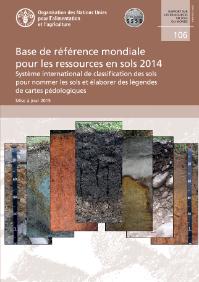Base referencial mundial del recurso suelo 2014
La tercera edición de la WRB incorpora, en el nuevo capítulo 2, elementos que permiten generar nombres taxonómicos mucho más informativos que llevan a deducir con facilidad la génesis y funciones de los suelos. Por otro lado, esta nueva versión de la WRB facilita la elaboración de leyendas de mapas a varias escalas para uso multifinalitario.



